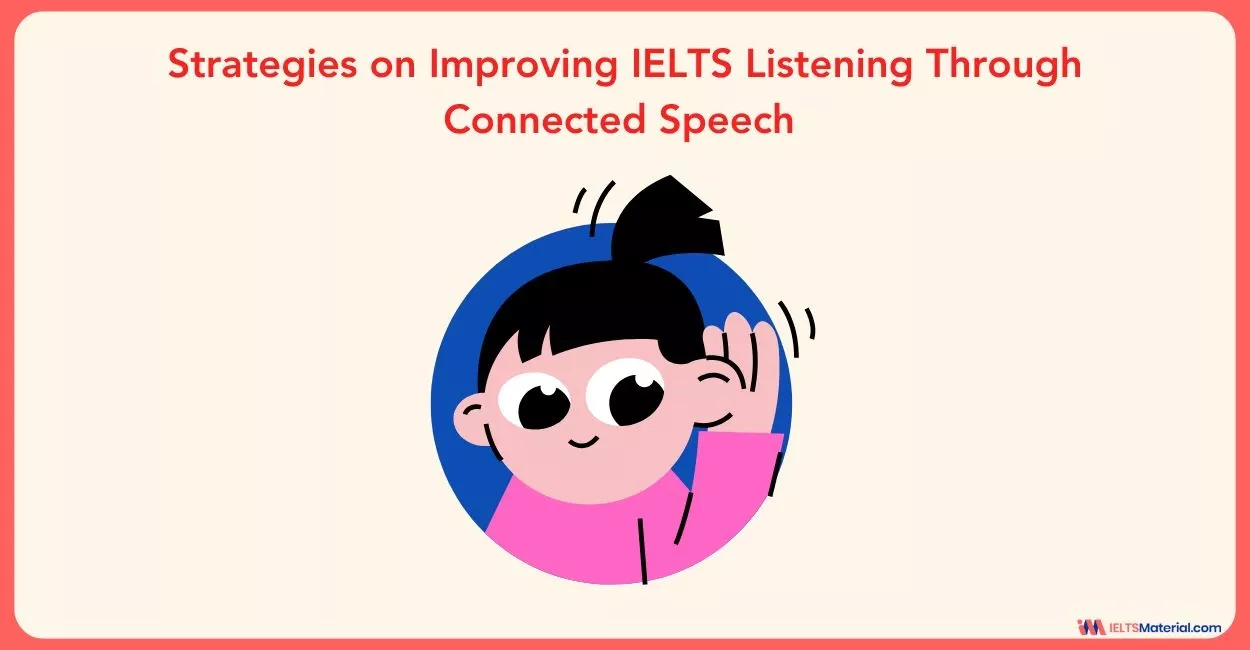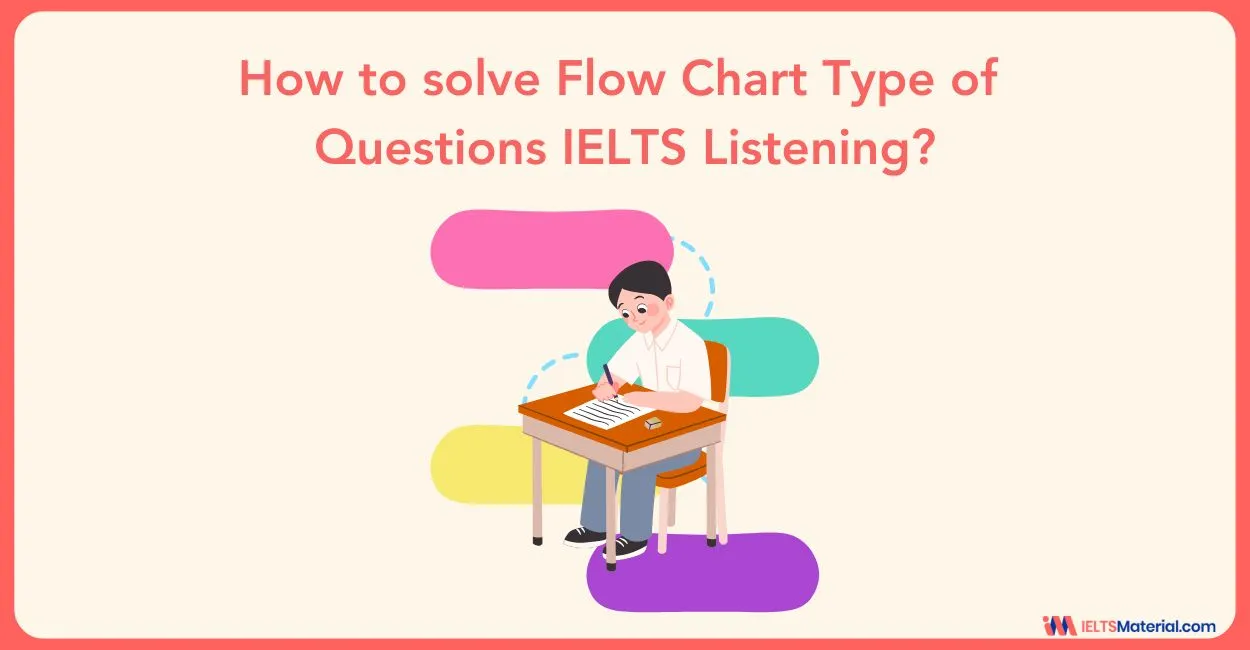Strategies on Improving IELTS Listening Through Connected Speech
3 min read
Updated On
-
Copy link
Improve your IELTS Listening with connected speech techniques like clipping, assimilation, and elision to avoid confusion as you perform your listening test! With our expert strategies, you get to grab your band score in no time!
Table of Contents

Limited-Time Offer : Access a FREE 10-Day IELTS Study Plan!
Listening skills in the IELTS exam are almost as critical as Speaking, Reading, and Writing skills. You cannot answer a question if you cannot truly understand what is being said by the speaker. What’s worse, students often respond incorrectly to questions because they had to guess what was being said by the speakers.
Students often focus on the Speaking section of the IELTS exam because they find it difficult to properly put an entire sentence together. But listening seems easy to them. So, many students become overconfident and don’t devote enough time. Besides that, there are some students who dread the listening section because they cannot catch the rhythm of the native speakers.
They get confused by what they have heard, for example, is red eye or red dye, and often skip preparing for the Listening section. Therefore, in order to assist students like you, we will show you the tricks on improving IELTS Listening through connected speech now. So, get ready!
What is Connected Speech?
Connected speech is spoken language in a continuous sequence, as in normal conversation. The way words are spoken in isolation and the way they are pronounced in the sense of related speech also differs significantly. In connected speech, words or syllables are attached together, sentences are combined together, and words are stressed differently than they would be in writing.
Join a FREE online webinar to learn the tricks to deal with IELTS Listening to grab your dream band score!
Clipping of Sounds
In connected speech, when words run together, one of the features of related speech is the deletion or clipping of sounds. In connected speed, “want to” becomes “wanna,” “going to” becomes “gonna,” “rock and roll” becomes “rock ‘n’ roll,” and “them” becomes “’em” or “‘dem.” There are very informal uses of common words in casual conversation.
Assimilation
When the sound in a word induces a shift in sound in a neighbouring word, this is known as assimilation. For instance, try saying the following words together:
| Hyde Park
Last year You’ll observe the last sound of the first word changes in each scenario. The ‘d‘ becomes ‘b‘ and ‘t’ becomes ‘th‘. |
Elision
Elision is the omission of a sound or a syllable. Mostly the sound of the first word is omitted or lost.
| For example
Left-back Looked back The sound of the first word changes from /t/ to the /b/ or the /d/ to the /b/ sound. It is mostly because they are spoken together at the same time with good speed. |
Catenation
When a word’s last sound is a consonant, and the next sound is a vowel, the two sounds are related.
| For example
What is it: may sound like ‘wo‘ ‘ti‘ ‘zit.’ |
Intrusion
When a word’s last sound is a vowel, and the next sound is also a vowel, we sometimes add an additional sound, which may be / j /, / w /, or / r /.
| For example
Go away: may sound like /w/ after go. |
The best way to understand connected speech is to practise hearing conversations at a high and low pace and jot down each word that appears confusing.
Let’s assume, in an audio clip, ‘how did you do it?’ sounds like ‘howja’ ‘dowit’, and you are not able to identify the words. Try to guess the meaning from supporting sentences, or if transcripts of the conversations are available, try to look out the words there. Soon, with regular practice, you will be able to identify a lot of words, and your listening skills will automatically improve.
Also check :
Explore IELTS related articles

Start Preparing for IELTS: Get Your 10-Day Study Plan Today!
Recent Articles

Nehasri Ravishenbagam

Nehasri Ravishenbagam

Haniya Yashfeen





Post your Comments